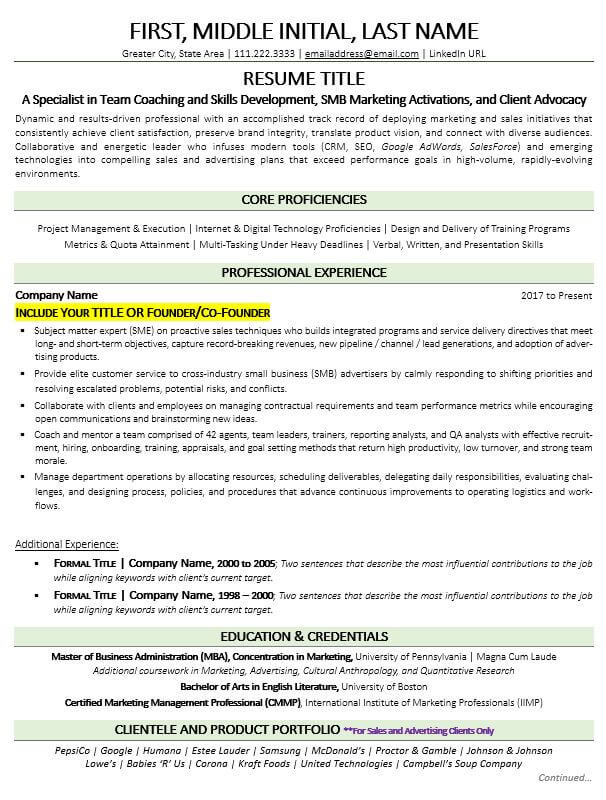Should You Use Color on Your Resume? (+ Examples)

Your resume needs to stand out from the crowd. Hiring managers review hundreds of applications every day. If you want a shot at landing your next job, you must pull out all the stops. But can using resume colors help you attract the right kind of attention?
If you want hiring managers to focus on your resume, you might think that a colorful design is the answer. However, the truth is that using resume colors can be a risky game. Get it wrong, and you might overwhelm the reader. Let’s face it — you don’t want your resume to end up in the trash. Creating a well-designed resume is a real art form.
In the following guide, we will delve into everything you need to know about resume colors. You can expect to learn how resume colors affect your chances of passing the Applicant Tracking System (ATS), how to use color sparingly, and a variety of other tips to help you out.
How resume colors impact the Applicant Tracking System (ATS)
Most companies today automatically screen your resume. Nearly 75% of candidates are rejected by the Applicant Tracking System (ATS). One of the main reasons for that rejection is because the resume isn't formatted properly.
Applicant Tracking Systems (ATS) instantly recognize black text but may struggle with fancy colors, graphics, and icons. Since you need to get past those systems to be considered by an actual human, it’s important to comply with the machine’s expectations. For that reason, you may want to take extra care when you’re using resume colors.
What do the experts say about color on a resume?
First, we should note that the experts have differing views on the topic of resume colors. Some traditionalists argue that resumes should always be presented in clear, black and white. However, that is not the entire story.
Other experts subscribe to the idea that some color is okay — if you don’t get carried away. Many in the design professions are in favor of an even more liberal approach. They believe that graphics, colored text, and other resume dressing can help to showcase design capabilities in a way that mere text cannot.
As a rule, almost everyone agrees that resume color should be used sparingly. When you’re designing your next resume, consider whether a splash of color will add value.
Hint: Remember why you have a resume
Your resume has a purpose. That is to convey critical information to potential employers. So, this document needs to be clear and presentable to readers. Of course, it also needs to be professional and serious. That’s important if you want people to take your application seriously.
Resume colors can impact the presentation if you don’t handle them with care. If you use too many of them or get a tad too “creative,” it could end up looking a mess.
Never forget that you’re trying to make the right first impression. Color is a powerful tool that can impact emotions and thoughts. Resume colors are no different. Using the wrong tones or too much color can distract from an otherwise stellar application. One thing is clear: your use of resume color must be designed to enhance your presentation.
Of course, you can still use some design on your resume — just don't get too creative. In the following section, we will take a quick look at the times when using resume colors will work to your advantage. So long as you are strategic, you can nail the resume design.
Examples of how to use color on a resume:
As we have mentioned, there are specific instances when using resume colors is appropriate. If you need some more guidance on this topic, you’ve come to the right place. Here’s a breakdown of why and how you should be using resume colors:
Highlighting a resume section
Make sure there’s a reason for any resume color usage. Conservative use of color can help to separate information and make the document easier to digest. For example, you may be able to incorporate those color options into your subheadings or highlight special skills. Put simply, color can be a great tool when you use it to highlight something.
Adding flair to resume elements
Using a couple of resume colors can be effective. However, you need to make sure that they complement one another. The design of your resume needs to be subtle and sleek. Some candidates choose to use two resume colors for the non-text-based elements of the document. For example, you could use them for dividers, bold lines, and headers.
Stylistic and design choices
Do you work in a creative field? If you are a graphic designer or photographer, you may choose to use resume colors on your application. However, you don’t want to go overboard here. You will be sending your portfolio along with your application package. That means that you don’t need to showcase all of your creativity on your resume.
Example of resume colors:
Looking for some extra inspiration? If you’re unsure of how you can pull off this difficult design feat, look no further. We’ve got you covered. Take a look at our resume example which demonstrates how you can use colors perfectly:

Final tips for using resume color correctly
By this point, you should have a good grasp on why you can use color on your resume. It’s a tough decision — but only you know the right pathway to take. If you are intent on using resume color, these tips can help you to use those hues to your advantage:
Do not use resume color just to demonstrate your creativity. If your resume is too chaotic, it’s likely to overwhelm the hiring manager.
Limit your palette selection. While you might be tempted to choose multiple resume colors for variety, avoid that temptation. If you’re using color to highlight information, try to rely on just one or two. Anything more can be distracting.
Make sure it looks the part. If you have used resume colors, take a final look at the document. Does it do the job? Is it a professional tool? Or, on the other hand, does it look overly stylized? If it’s the latter, rethink the design of your resume. When it comes to resume dos and don’ts, the style matters more than you think.
Pick a theme. Using resume colors sporadically is not going to do you any favors. If you want to brighten up your application, make sure that you use colors that complement one another. Your resume needs to be aesthetically pleasing too.
Summary
Resume colors have their place, but you shouldn’t use them overzealously. The choice of whether to use them is one that only you can make. A bit of color is generally acceptable, if your resume meets the right standards and you choose colors that are compliant with the ATS. It’s far more important, however, to focus on the content of the document, and properly showcase your relevant skills. Those skills and your potential value as an employee will ultimately determine your odds of landing an interview and job.
Not sure if your resume hits the mark? Check out our free resume review tool and get the answers you’ve been looking for. We can give you the pointers you need to ensure that you attract hiring managers and land more interviews than ever before. If you are ready to take the next steps in your job search, use our expert tool now.

